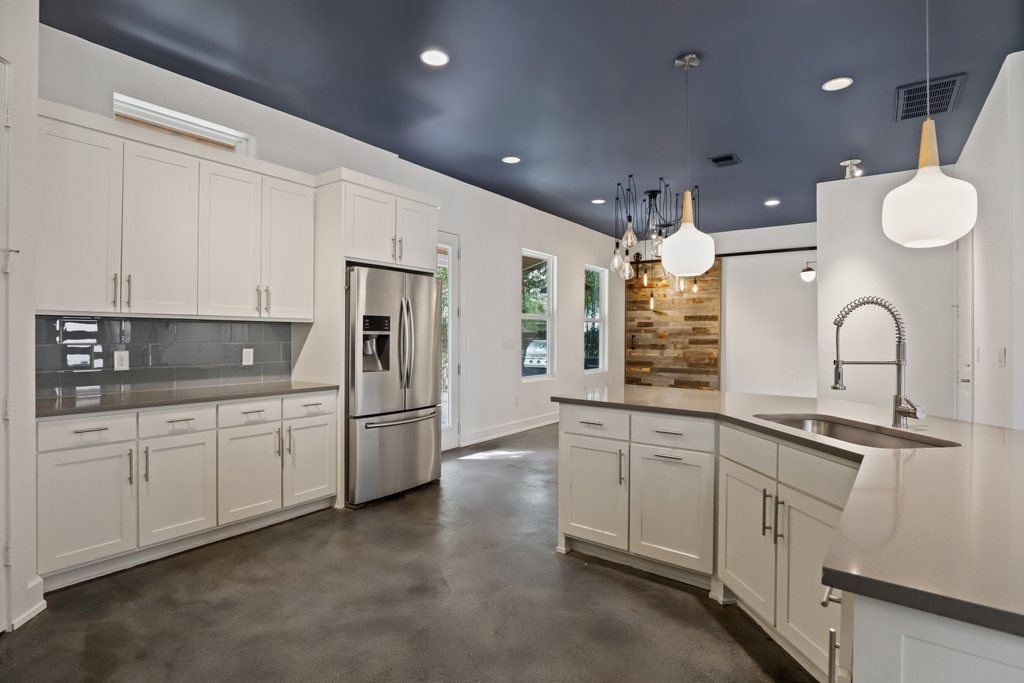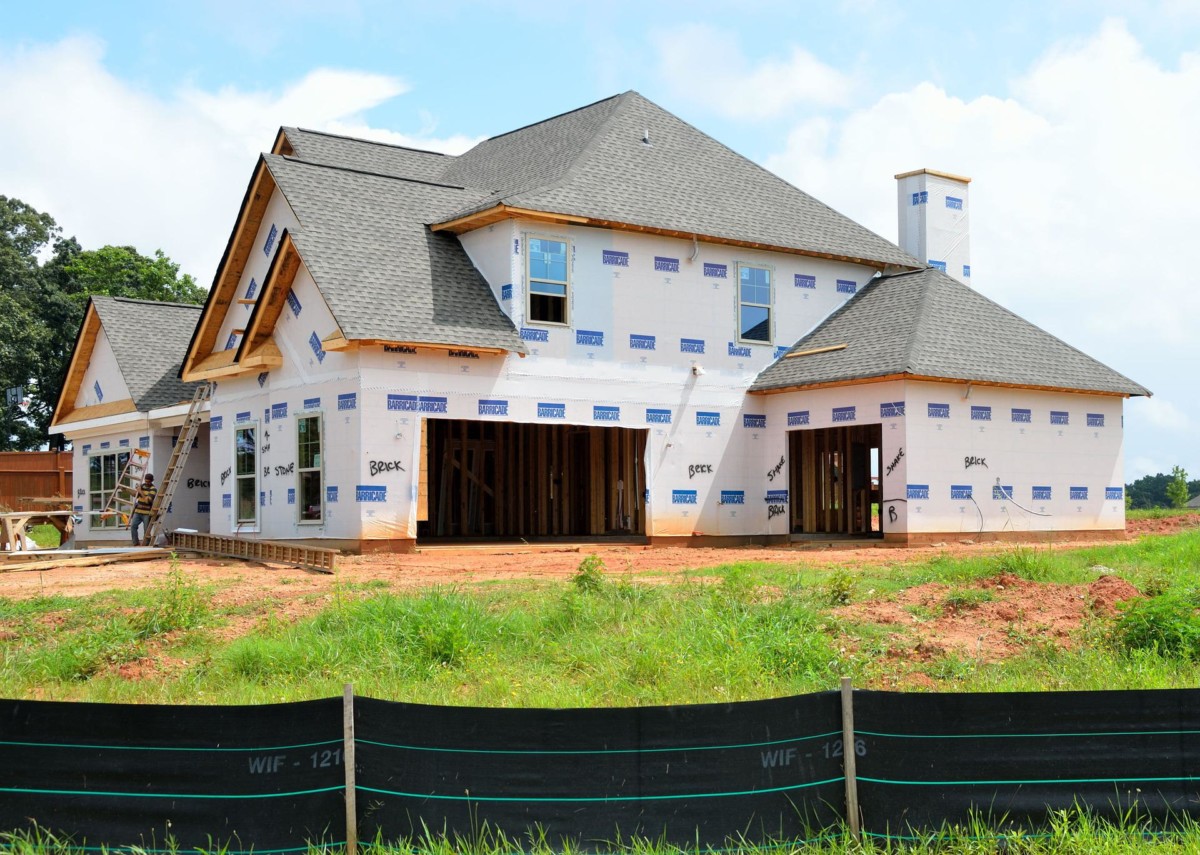35 Things to Add to Your New Construction Walkthrough Checklist
A newly built home should be perfect from the moment the builders and contractors are done, right? As wonderful as that would be, it isn’t always that easy. Your house might look perfect at first glance, but a closer look could reveal minor (sometimes major) repairs that need to be finished before move-in.
This is why buyers usually do one final walkthrough a couple weeks beforehand. But, as you might expect, there are a lot of little things to double-check. Come prepared with a new construction walkthrough checklist and you’ll know exactly what to look for ahead of time.

Why is it called a blue tape walkthrough?
You might hear a new construction walkthrough called a “blue tape walkthrough.” Why? Because buyers will often use blue painter’s tape to mark any spots that need to be fixed before everything is finalized.
Blue tape walkthroughs only apply to new construction homes. They’re generally more in-depth than a standard home sale walkthrough since everything in the house is new and customized.
Finding minor faults during a blue tape walkthrough is common, so your builder will probably schedule one or more follow-up walkthroughs to get your seal of approval.
Builders may also have you inspect the house earlier in the home construction process, after each contractor team finishes. Blue tape walkthroughs occur near the end of the building process after any smaller inspections are done.
What to expect during your final walkthrough
Final walkthroughs for new construction can be intimidating, especially for first-time homebuyers. Preparing a checklist ahead of time can give you peace of mind knowing you aren’t forgetting anything.
Most new construction walkthroughs last about two hours. Try to give yourself enough time to ensure everything in the home is up to your standards.
The builder’s agent or customer service representative, along with an on-site worker or contractor, will usually be there when you arrive. They’re there to answer any questions you have about your new house.
Most problems you come across during a final walkthrough will be minor or cosmetic. You might notice a kitchen tile crack, a baseboard missing some paint, or an outlet missing a cover.
But sometimes, there are bigger concerns, like a plumbing leak or a roof gutter emptying in the wrong direction. More significant repairs should be handled as soon as possible.
How to prepare for your walkthrough
You’ll need to be able to focus and look at the home in fine detail, so try to bring as few people with you as possible.
Bring these items with you to the walkthrough:
- Blue tape or brightly colored sticky notes
- Marker
- Clipboard
- Notebook
- Pen or pencil
- Camera with flash (a high-quality phone camera is fine)
- Small electrical device, like a hair dryer or your phone charger
- Flashlight with fresh batteries
- Level tool
- Tape measure
- Binoculars (if you’re inspecting the roof yourself)
- Any files or documents you have for the home
As you walk through the home, use blue tape or sticky notes with a marker to clearly note the areas that require the builder’s attention. Make a list in your notebook and take photos of items that need repairs, just in case you need to reference them later.
Use your small electrical device to test each outlet in the home. Then, use the flashlight, level, and tape measure to make sure everything is constructed as planned. Some home buyers hire an inspector to inspect the roof, but either way, you can use binoculars to get a good look at it yourself.
Don’t forget to bring any files or documents for your new build. That way, you can make sure all fixtures, paint colors, and other details are just the way you wanted them.

Checklist for your new construction walkthrough
Use the new construction walkthrough checklist below to avoid missing potential flaws in the home.
Exterior
- Driveway and concrete: Look for cracks in the concrete and ensure the pavement is level. If you specified a specific coating or material for the driveway or garage floor, make sure they check out.
- Gutters: Gutters should empty away from the home’s foundation, not toward it or on top of it. Check that gutters are installed below the drip edge of the roof. Gutters should also be cleaned before move-in.
- Hardscaping: Turn on hardscaping features like fire pits, outdoor kitchens, or pergola fixtures. Keep them on for at least five minutes to ensure they work properly.
- Irrigation: Turn on all water spigots and sprinkler systems. Make sure all irrigation systems work and have good water pressure.
- Landscaping: Check out the curb appeal. Any grass and plants on the lot should look move-in ready.
- Paint: Keep an eye out for paint bubbling, cracking, or discoloration. Make sure all window, floor, and door trims are painted well. Check that all exterior and interior paint are the exact colors you wanted.
- Roof: Use binoculars to make sure all shingles or roof tiles are level. All corners and edges of the roof should be properly sealed.
Garage
- Garage doors: Open and close garage doors to see if they run smoothly along the tracks. Make sure each garage door opener works.
- Lighting and features: Turn any lights and features like security systems on and off to see if they’ve been installed correctly. Any requested garage shelving should be installed to your specifications.
Balconies, decks, patios, and porches
- Flooring: All outdoor flooring should be installed well and match your order. This includes tiles, pavers, rails, and any other features.
- Rails and guards: Check for safe, secure installation.
Doors
- Doors: Open and close all doors to make sure they don’t stick or creak. Check the door’s paint. Check that hinges, knobs, and locks work well.
- Doorbell: Ring the doorbell to make sure it works.
Floors and stairs
- Floors: Walk on different parts of the floor to check for cracks and squeaks. Keep an eye out for missing grout or molding. Check that any carpet is installed evenly and nothing pokes through the edges.
- Stairs: Stair safety is very important. Check that all carpet or flooring has been installed well and there aren’t any tripping hazards. Check all railings and make sure they’re safe and secure.
Walls and ceilings
- Ceilings: Look up at the ceiling to see if it is painted thoroughly in your chosen color. Check for any bulging or cracks, which can be signs of water damage and other problems.
- Trims: Check that baseboards, moldings, wainscoting, and other details are well painted in your chosen colors.
- Walls: The wall should be painted evenly, and the color should match your order. Check for any scuffs and chips in the paint.
Windows
- Windows: Open and close each of your windows. Check that screens are securely installed on each window, and ensure all locks, panes, and tracks look good.
Kitchen
- Cabinets and drawers: Open and close all drawers and cabinet doors to see if they move smoothly. Look for chips and scuffs on the paint.
- Kitchen sink: Make sure the faucet works well. Turn the sink garbage disposal on and off.
- Kitchen surfaces: Check kitchen countertops and floors for cracks or imperfections. Look at the grout lines between tiles to make sure the floor is installed correctly.
- Appliances: Any appliances included with the home should be in working order. Check that the dishwasher works, the stove turns on, and the oven heats up.
Bathrooms
- Cabinets and drawers: Open and close all cabinets and drawers. Check that all hinges or tracks work. Check for any chips or scuffs in the paint.
- Fixtures: Check that each toilet paper dispenser, towel holder, and other bathroom fixture is securely installed.
- Sink, toilet, and tub: Test each sink, toilet, and tub. Make sure that each has good water pressure and drains properly.
Electrical
- Breaker box: Have the builder or contractor show you the breaker box and ensure all switches are clearly labeled and work properly.
- Fixtures: All installed electrical fixtures should turn on. Make sure they all match your specifications and are free of dents or cracks.
- Outlets: Use the small electrical device you brought to check that all outlets work.
- Switches: Flip all wall switches on and off. Check that they turn on the appropriate light or appliance.
Plumbing
- Faucets: Turn each faucet on and off. Make sure plumbing fixtures have good water pressure and that there aren’t any leaks above or below the sink. Check that faucets supply cold and hot water.
- Washer and dryer hookups: Check all spigots, drains, and pipes in the laundry room.
Heating and cooling
- Heating and cooling: Turn the heat and air conditioning on and off to see if they operate properly.
- Vents: With the AC, heat, or system fan on, check each vent for proper airflow. Make sure vents don’t become too hot to the touch.
Attic and basement
- Attic and basement: Check that your attic and basement are either finished or unfinished, based on what you and your builder agreed upon. Check for any signs of water damage. Check for proper insulation and ventilation.

What should you do if you find problems during the final walkthrough?
Don’t worry, finding minor problems during your new construction walkthrough is very common. In fact, sticking blue tape on 30 or 40 minor issues is often considered normal.
When something seems off, label the problem, take a picture of it, and take note of it in your notebook. This will give you easy access when the time comes to check on the completed repairs.
You have the right to see if all repairs have been completed before you sign the closing paperwork for your home. For any repairs that still need to be done, ask your builder:
- What is the timeline for each repair to be completed?
- Who will be doing the repairs?
- Will you (the buyer) be able to do another walkthrough once the repairs are done?
- How many walkthroughs does the builder usually schedule?
- Will any repairs need to be completed after you move into the home?
- What’s the process if you discover new repairs after you move in?
After move-in
Most builders will ask for a new list of repairs within 30 to 90 days after move-in if you find anything new that needs to be fixed. They may also ask for another list of repairs during your 11th month in the home. This is usually the month before the builder’s warranty expires.
When a builder requests a list of repairs, send it in writing. That way, everyone has easy access to your complete list of repairs.
Whether you’re building a house in Boston, MA or a home in El Paso, TX, a new construction walkthrough is an important step in the process. During the walkthrough, use your checklist, ask plenty of questions, and examine every corner of the house to avoid costly repairs down the road.
Come prepared, take your time, and remember: you’re one step closer to a brand new home.
The post 35 Things to Add to Your New Construction Walkthrough Checklist appeared first on Redfin | Real Estate Tips for Home Buying, Selling & More.




